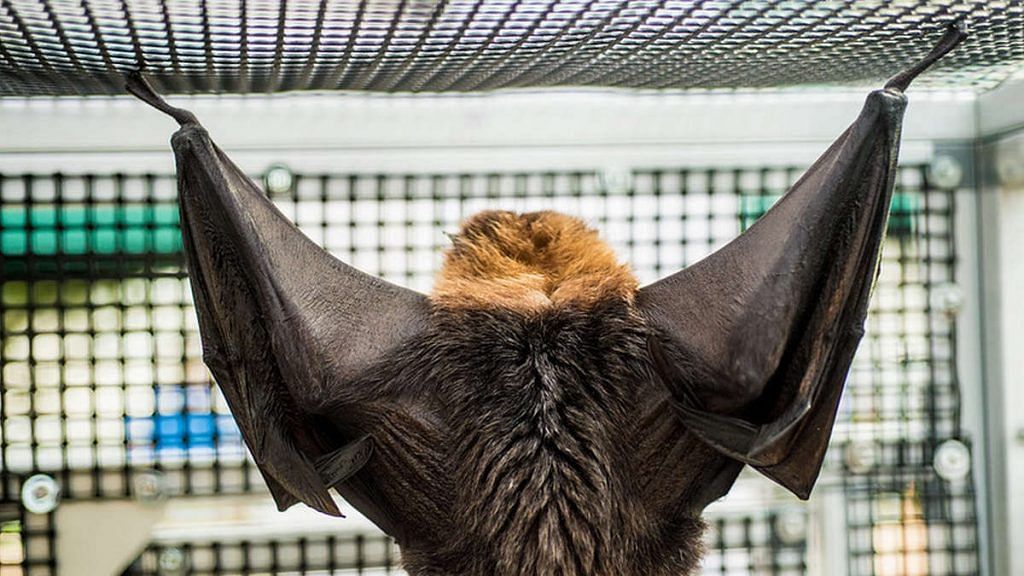New Delhi: In a study that has yielded potentially important clues about the origins of the Covid-19 pandemic, scientists of the Pasteur Institute in France conducted experiments with a bat virus similar to SARS-CoV-2 and tried to spur the evolution of a mutation that could cause it to adapt to human cells.
While the virus, named BANAL-236, was able to bind to human cells in petri dishes, it failed to develop a key feature linked to transmissibility. This, the scientists said, indicated that it was likely that this feature of SARS-CoV-2 had evolved in bats and not through a process of “silent circulation” among humans.
For their research, the scientists had isolated a strain of coronavirus — similar to SARS-CoV-2 — from bats in Laotian caves in mid-2020. They then subjected it to various experiments.
In a February paper published in Nature, the researchers reported that the virus could infect human cells by binding tightly to the same protein that SARS-CoV-2 uses to gain entry. However, it lacked a furin cleavage site, which is a feature that makes SARS-CoV-2 so easily transmissible.
Furin is an enzyme that is found in human cells. The SARS-CoV-2 virus has a unique orientation of amino acids in its spike protein, and cleaves into two at the site when it comes into contact with the enzyme. The furin cleavage site makes the virus uniquely suitable to infect human cells and is believed to make it more transmissible than its relatives.
The scientists then reported in a June research paper (which is yet to be peer-reviewed) that BANAL-236 had very mild effects in lab animals. They found that while SARS-CoV-2 replicates quickly in the lungs of mice, much as is seen in humans, BANAL-236 was unable to do so to the same extent. Similarly, when two macaques were exposed to BANAL-236 via a nasal spray, the effect was even milder, with the virus replicating in the intestines, rather than the lungs.
While evolutionary experiments with viruses may provide important scientific insights into pandemics, they have raised questions around safety and ethics.
Last year, experts debated the possibility of the Covid-19 pandemic having broken out after a lab leak. It was suggested that the Wuhan Institute of Virology often carried out gain of function experiments, from where the virus may have accidentally leaked.
‘Gain of function’ is a field of research focused on growing generations of microorganisms, under conditions that cause mutations in a virus. Such experiments allow scientists to better predict emerging infectious diseases, and to develop vaccines and therapeutics.
Gain of function research may use genetic engineering or serial passaging. Genetic engineering involves ‘editing’ the genetic code to modify the virus in a way predetermined by the scientists. Serial passaging, meanwhile, involves allowing the pathogen to grow under different circumstances and then observing the changes — which is what the team in France did.
Also Read: Before Wuhan row, how US-China created SARS-like virus in 2015 to show its pandemic potential
What the findings suggest about Covid-19
The Pasteur Institute team wanted to investigate the possibility that SARS-CoV-2 entered the human population as a strain like BANAL-236, which does not cause severe disease and is not highly transmissible.
The scientists hypothesised that before the first clinical Covid-19 cases were detected at the end of 2019, the virus had been circulating among humans, mutating until it developed the furin cleavage site and became deadly.
Taking advantage of the fact the BANAL-236 is unlikely to be deadly and causes only mild disease, the team carried out serial passage experiments.
The team removed lung tissue from mice infected with BANAL-236 and used the tissue to infect healthy animals. They then repeated the cycle, transferring viruses from mouse to mouse.
In another experiment, they infected a dish of human intestinal cells with BANAL-236, then used the new viruses produced by the cells to infect new dishes.
For both experiments, the team restricted themselves to six such transfers, to avoid the risk of creating a virus that could adapt to human beings.
The team was unable to introduce a furin cleavage site of the BANAL-236 virus in either experiment. While the virus acquired new mutations, it did not get any better at infecting mouse lungs or human cells.
The team suggests that their experiments show the SARS-CoV-2 lineage gained the furin site in bats before a “spillover” into humans.
Arguing that the emergence of the furin site during “silent circulation” in humans was “unlikely”, the researchers noted: “Based on our work, it appears that the most probable hypotheses regarding the natural origin of the virus are the existence of bat viruses harbouring a furin site that could have infected humans directly or via other animal species.”
The research team is now pursuing further investigations in caves located in China and its neighbouring countries to understand the origin of the furin cleavage site.
However, the researchers did acknowledge the alternative hypothesis that “human infection might have occurred in the course of experimental virus isolation in the laboratory”.
Implications for Wuhan ‘lab leak’ theory
Experts have suggested that if the BANAL-236 researchers could not induce the virus to evolve the furin site during serial passage experiments, it is unlikely that scientists in a Wuhan lab could have deliberately done so with SARS-CoV-2, as some proponents of the “lab leak” theory have suggested.
“This is another nail in the coffin of the lab leak theory that by now should be firmly sealed in the crypt,” Edward Holmes, a virologist at the University of Sydney, was quoted as saying by The New York Times.
Other experts, however, have held that the experiments in question were too small in scale to arrive at any sweeping conclusions.
(Edited by Asavari Singh)
Also Read: FabiSpray helps clear Covid in nose faster & prevent severe disease, says Lancet study
